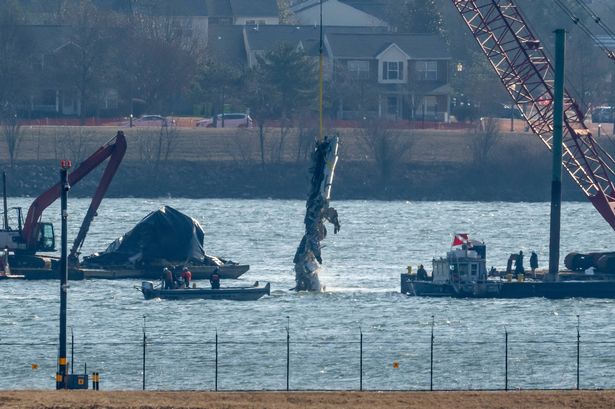The National Transportation Safety Board’s ongoing hearings in Washington, D.C., are meticulously dissecting the horrific helicopter and American Airlines plane collision over Ronald Reagan National Airport, an incident that tragically claimed 67 lives. Investigators are seeking to uncover the root causes of this devastating air disaster, with initial findings pointing towards critical errors and systemic failures.
Early revelations from the NTSB investigation indicate that the helicopter involved was operating at an altitude significantly higher than permitted for its flight path, and more alarmingly, its onboard altimeter readings were found to be inaccurate. This crucial discrepancy suggests that the pilots may have been unknowingly flying at a dangerous elevation, directly contributing to the catastrophic mid-air impact.
Further details emerging during the hearing highlight the age of the Black Hawk helicopter’s altimeter technology, designed in the 1970s. Tests conducted by the NTSB on other helicopters from the same military unit revealed consistent discrepancies, with barometric altimeters showing readings 80 to 130 feet lower than actual altitude, underscoring a potential fleet-wide issue that could jeopardize aviation safety.
Despite these findings, some military officials argued that a variance of 70 to 100 feet between altimeters falls within acceptable parameters for aviators, who are expected to maintain their elevation within a 100-foot margin. However, this perspective clashes with the grim reality of the narrow margin of error inherent in the congested airspace around a major international airport.
A more profound concern brought to light during the proceedings revolves around the Federal Aviation Administration’s (FAA) approved flight paths near Reagan National Airport, which feature exceptionally narrow spacing between helicopters and fixed-wing aircraft during landing operations. This design creates an inherently high-risk environment, making even minor navigational errors potentially fatal.
The complexity of air traffic control during the incident was also scrutinized, with a single controller managing multiple aircraft communications in the two minutes leading up to the collision. The report noted a critical communication breakdown: while all aircraft could hear the controller, helicopters and airplanes could not hear each other on their respective frequencies, leading to “stepped on transmissions” and a lack of situational awareness.
Other contributing factors identified include the helicopter crew’s use of night vision goggles, which inherently limit peripheral vision, and a disturbing pattern of 85 close calls at Ronald Reagan National Airport in the years preceding the crash that the FAA reportedly failed to acknowledge. Furthermore, Army helicopters were frequently operating near the capital with crucial tracking technology, ADS-B Out, switched off.
In response to these revelations, U.S. Sen. Ted Cruz has proposed legislation mandating all aircraft operators to implement both ADS-B Out and the more advanced ADS-B In systems, essential for broadcasting and receiving aircraft location data. Transportation Secretary Sean Duffy expressed support for the bill, emphasizing the need for enhanced safety measures and hinting at prior administrative negligence.
This tragic incident and the subsequent investigation underscore a broader trend of concerning near misses and accidents this year, despite statistical reassurances about the overall safety of air travel. The ongoing NTSB hearings serve as a critical forum to address these systemic issues, striving to prevent future catastrophes and restore public confidence in aviation safety.






Leave a Reply